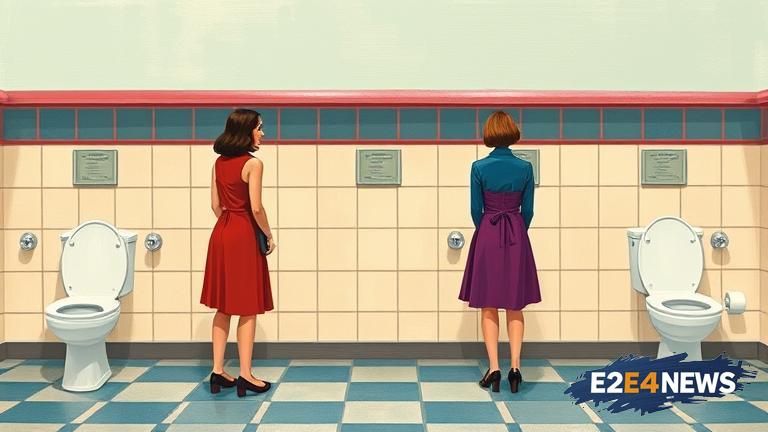The push for potty parity has gained momentum in recent years, with women lawmakers taking the lead in advocating for equal access to restrooms in state legislatures across the US. This issue has been a long-standing problem, with many state capitols having fewer women’s restrooms than men’s, leading to lengthy wait times and discomfort for female lawmakers and staff. The lack of potty parity is not only an issue of equality but also a matter of basic human dignity. Women lawmakers are sharing their personal experiences of having to wait in line for extended periods or having to use restrooms far from their offices, highlighting the need for change. The movement has sparked a national conversation, with many state legislatures taking steps to address the issue. In some states, lawmakers have introduced bills to require a certain ratio of women’s restrooms to men’s, while others have allocated funds to renovate and expand existing facilities. The push for potty parity is not limited to state legislatures, with many private companies and public institutions also re-examining their restroom facilities to ensure equal access. The issue has also raised awareness about the importance of designing public spaces with women’s needs in mind. Women lawmakers are emphasizing that potty parity is not just a women’s issue, but a matter of equality and fairness that affects everyone. The movement has also highlighted the need for more women in leadership positions to bring about change and advocate for issues that affect women. As the push for potty parity continues to gain momentum, it is likely that we will see significant changes in the coming years. State legislatures will need to prioritize the renovation and expansion of restroom facilities to ensure equal access for all. The movement has also sparked a conversation about the need for more inclusive and equitable design in public spaces. Women lawmakers are leading the charge, using their platforms to raise awareness and advocate for change. The issue of potty parity has also highlighted the importance of having diverse perspectives in leadership positions. As women continue to break down barriers and take on leadership roles, we can expect to see more attention paid to issues that affect women. The push for potty parity is a testament to the power of women’s voices and the impact that they can have when they come together to advocate for change. The movement has also raised awareness about the need for more women in STEM fields, particularly in architecture and design, to ensure that public spaces are designed with women’s needs in mind. Furthermore, the issue of potty parity has highlighted the need for more research on the impact of design on women’s experiences in public spaces. By prioritizing the needs of women and designing public spaces with equality in mind, we can create more inclusive and equitable environments for everyone. The push for potty parity is a step in the right direction, and it will be exciting to see the impact that this movement has in the coming years. As the conversation around potty parity continues to grow, it is likely that we will see significant changes in the way that public spaces are designed and renovated. The movement has also sparked a national conversation about the importance of equality and fairness in all aspects of life. Women lawmakers are leading the charge, using their platforms to raise awareness and advocate for change. The issue of potty parity has also highlighted the need for more women in leadership positions to bring about change and advocate for issues that affect women. In conclusion, the push for potty parity is a significant step towards creating more inclusive and equitable public spaces, and it will be exciting to see the impact that this movement has in the coming years.
